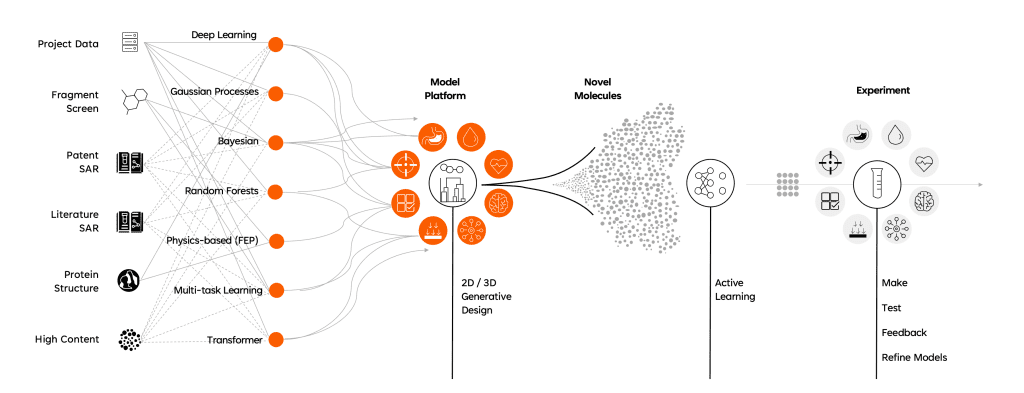Exscientia is now Recursion
Stay up to date at www.Recursion.com
Precision Design
Drug design is engineering at the molecular scale.
Every position of every atom and every bond determines the future success of a molecule.
Working with sparse data allows us to design potential first-in-class molecules for the latest high-interest targets.
Generative design and active learning deliver unprecedented efficiencies to candidate discovery.
Balanced molecules encode efficacy, safety and bioavailability and maximise the chance of success in a clinical setting.
Data Agnostic
For each project we collect all relevant experimental information irrespective of data type.

Design & Learning
Our systems transform drug discovery into effective formalised design moves.


Exploration & Exploitation
Our systems design molecules that simultaneously address multiple clinical requirements.
Through a combination of AI design, predictive models and experimentation, our systems quickly explore and learn which areas of chemistry are most likely to balance the complex requirements for each drug discovery project.
Once promising areas are identified, the systems focus on designs that exploit those areas in order to identify the best compounds.
This balance of early exploration followed by exploitation enables rapid learning and delivers unparalleled progress from initial hits to clinical candidate.
Generative Design
Designing molecules that balance all project requirements of efficacy, selectivity, safety and bioavailability is a significant task.